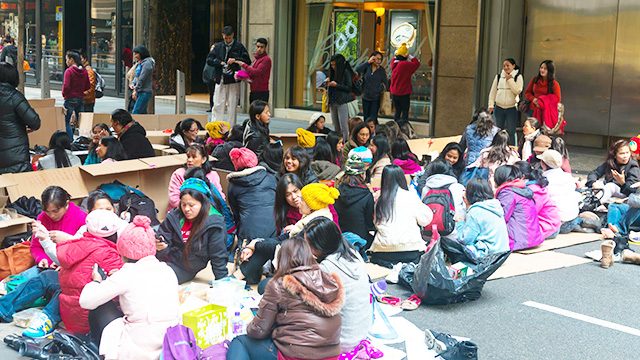SUMMARY
This is AI generated summarization, which may have errors. For context, always refer to the full article.


MANILA, Philippines – The International Labour Organization (ILO) on Monday, January 23, reported that although employment rates may be on the rise, a large part of jobs created in Asia-Pacific remain of poor quality.
“Employment growth in the region is expected to remain strong, with the number of employed persons projected to grow by some 23 million or 1.2% between 2017 and 2019…Moreover, a large proportion of the jobs created in the region are expected to remain of poor quality,” said its “World Employment and Social Outlook: Trends 2018” report.
According to the ILO, vulnerable employment – characterized by the United Nations as jobs with low earnings and productivity, as well as poor working conditions – affect about half or more than 900 million individuals in Asia-Pacific.
The organization projects that 72% of workers in Southern Asia, 46% of workers in Southeast Asia and the Pacific, and 31% in Eastern Asia will be in types of vulnerable employment by 2019.
The ILO likewise said the number of workers in vulnerable forms of employment is also expected to increase worldwide with an additional 17 million people expected to be in these types of work in 2018 and 2019.
Slow transfer
According to the ILO, pervasive poor quality of work in the region can be attributed to the slow transfer of workers from low-paying jobs to higher-paying jobs.
“The high and persistent incidence of vulnerable employment in the region largely reflects the fact that structural transformation processes, whereby capital and workers transfer from low to higher value-added sectors, are lagging behind in large parts of the region,” said Stefan Kühn, ILO economist and lead author of the report in a press release.
An exception, however, was noted in the case of Eastern Asia where majority of workers from the agricultural sector have shifted to the services sector, most notably in China.
In South Asia, majority of workers remain in the agricultural sector with 59% of total employment jobs arising from this sector, ILO data shows.
Meanwhile, in Southeast Asia and the Pacific, the organization noted an increase in service-based jobs.
In addition to this, only a slight increase in manufacturing jobs was noted in Southeast Asia and the Pacific since the region’s economy has “increasingly become service-based without having had a proper experience of industrialization,” according to the ILO.
The ILO reported that while strong job creation in ICT-intensive services was seen, majority of jobs created in the last few decades were still in traditional low value-added services – where informal and poor quality employment remains rampant.
Vulnerable employment also remains more common among women than men, especially in Southern Asia as well Southeast Asia and the Pacific, the ILO said.
“[In these regions] nulnerable employment rates among women are respectively more than 10 and 8 percentage points higher than those of men,” the report said. – Rappler.com
Add a comment
How does this make you feel?





There are no comments yet. Add your comment to start the conversation.